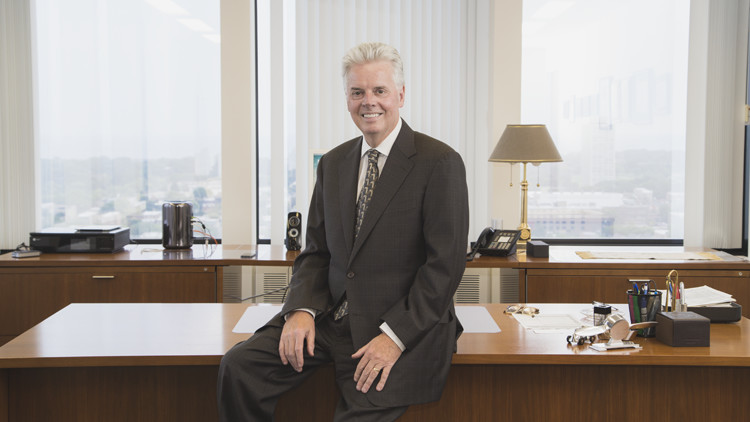
The summer season brings to mind a passage from the book The Call of Solitude by the late university educator Ester Schaler Buchholz: “Others inspire us, information feeds us, practice improves our performance, but we need quiet time to figure things out, to emerge with new discoveries, to unearth original answers.” This period between our spring and fall semesters gives our faculty time to recharge and focus more intently on their projects. While the outward-facing pace of the university may appear to slow somewhat, the work never stops. In this issue of IIT Magazine you can read about some of the high-level research that is taking place.
For example, interdisciplinary teams are solidifying ideas and writing proposals for consideration in the Nayar Prize II competition. Madhavan Nayar (M.S. IE ’68) and his wife, Teresa, on behalf of the Nayar Family Foundation, have established this second gift package totaling $1.1 million to further support breakthrough, innovative projects. This issue of the magazine includes a profile of Assistant Professor Lili Du, a recent National Science Foundation CAREER Award winner, who is exploring ways to coordinate the centralized movement of vehicles with the help of an innovative online routing system and other technologies. She is also one member of a team exploring “The Driverless City” that has been awarded $100,000 in the first phase of the Nayar Prize I competition. The April 2016 issue of Wired magazine featured an article on the team’s project with comments by Du and Associate Professor Marshall Brown from the College of Architecture.
Headed by Professor Thomas Irving, Illinois Tech’s Biophysics Collaborative Access Team performs research at Argonne National Laboratory. The team utilizes the Advanced Photon Source, one of three global sites and the only one in the United States where investigators can conduct state-of-the-art diffraction studies and macromolecular solution scattering. You can read about Irving’s work on muscle proteins, funded by the National Institutes of Health, and even watch an IIT Magazine video conducted with Irving at Argonne.
In 2008 Illinois Tech launched Perfect Power at IIT, a smart microgrid system that saves the university about $1 million a year, and reduces the time and money lost to power outages while meeting our school’s energy needs. This year the largest electric utility in Illinois, ComEd, received a $4 million grant from the U.S. Department of Energy to design and develop solar power and battery storage as part of a microgrid the utility is building in Chicago’s Bronzeville community. That system will connect with Illinois Tech’s microgrid. Bodine Chair Professor Mohammad Shahidehpour, who is leading the university’s efforts, worked with ComEd, Argonne, and industry partners to develop the master control system that will enable the microgrids to share power.
All of these research areas—urban transportation, heart health, and energy-saving improvements—pertain to issues that impact us all on a massive scale. Such work is a year-round pursuit, and reflects Illinois Tech’s dedication to relevant research and education—and a commitment to unearthing original answers.
Sincerely,
Alan W. Cramb
President